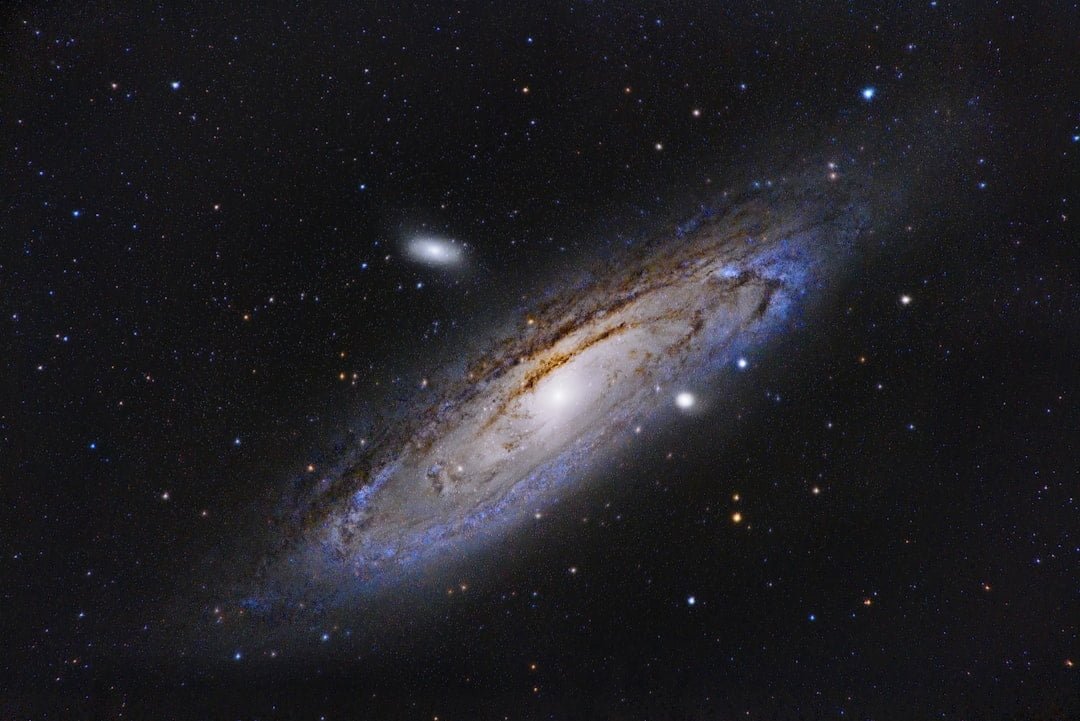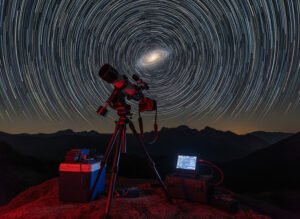The mysteries of space have captivated human beings for centuries. The vastness and complexity of the universe have always been a source of wonder and fascination. From the ancient civilizations who looked up at the night sky in awe, to the modern scientists who dedicate their lives to unraveling its secrets, space continues to hold an allure that is both humbling and inspiring.
Key Takeaways
- Space is full of mysteries that continue to fascinate and intrigue us.
- Our understanding of the laws of physics is crucial to unlocking the secrets of the universe.
- Despite our advances, there are still many limitations to our current knowledge.
- The search for new discoveries is ongoing and essential to expanding our understanding of the cosmos.
- Black holes, dark matter, and fast radio bursts are just a few of the strange phenomena that continue to puzzle scientists.
Understanding the laws of physics
Physics is the branch of science that seeks to understand the fundamental laws that govern the universe. It provides us with a framework to explain and predict the behavior of matter and energy. When it comes to space, physics plays a crucial role in helping us understand the workings of celestial bodies, the forces that shape galaxies, and the nature of space-time itself.
One of the most well-known laws of physics that applies to space is Newton’s law of universal gravitation. This law states that every object in the universe attracts every other object with a force that is directly proportional to their masses and inversely proportional to the square of the distance between them. This law helps explain why planets orbit around stars, why moons orbit around planets, and why galaxies cluster together.
Another important law of physics that applies to space is Einstein’s theory of general relativity. This theory describes gravity as the curvature of space-time caused by mass and energy. It explains phenomena such as black holes, gravitational waves, and the bending of light around massive objects. General relativity has been confirmed by numerous experiments and observations, making it one of the most successful theories in physics.
The limitations of our current knowledge
Despite our advancements in understanding the laws of physics, there is still much about space that remains unknown. In fact, it is estimated that we currently only understand about 5% of the universe. The remaining 95% is made up of dark matter and dark energy, two mysterious substances that have yet to be fully understood.
Dark matter is believed to make up about 27% of the universe. It does not emit, absorb, or reflect light, making it invisible to our telescopes. Its presence is inferred through its gravitational effects on visible matter. Scientists are still trying to determine what dark matter is made of and how it interacts with other forms of matter.
Dark energy, on the other hand, is believed to make up about 68% of the universe. It is a hypothetical form of energy that is thought to be responsible for the accelerated expansion of the universe. Its nature and origin are still largely unknown, and it remains one of the biggest mysteries in cosmology.
The search for new discoveries
Despite the limitations of our current knowledge, scientists are constantly pushing the boundaries of exploration and discovery in space. Space agencies around the world are launching missions to study distant planets, search for signs of life, and unravel the mysteries of the universe.
One such mission is NASA’s James Webb Space Telescope, set to launch in 2021. This telescope will be the most powerful space telescope ever built and will allow scientists to see further back in time than ever before. It will help answer questions about the formation of galaxies, the birth of stars, and the conditions necessary for life.
Another mission that is currently underway is the European Space Agency’s Gaia mission. Gaia is mapping billions of stars in our Milky Way galaxy with unprecedented precision. This data will help scientists understand the structure and evolution of our galaxy, as well as provide insights into the distribution and properties of dark matter.
The strange behavior of black holes
Black holes are one of the most fascinating and mysterious objects in space. They are regions in space where gravity is so strong that nothing, not even light, can escape their gravitational pull. The study of black holes has led to some groundbreaking discoveries and has challenged our understanding of physics.
Recent research has shown that black holes are not the “eternal prisons” that they were once thought to be. Instead, they can emit jets of high-energy particles and radiation, known as relativistic jets. These jets are thought to be powered by the intense gravitational forces near the black hole’s event horizon.
Scientists are also studying the phenomenon of gravitational waves, which are ripples in space-time caused by the acceleration of massive objects. The detection of gravitational waves in 2015 confirmed a major prediction of Einstein’s theory of general relativity and opened up a new window into the study of black holes.
The enigma of dark matter and dark energy

Dark matter and dark energy are two of the biggest mysteries in modern astrophysics. Dark matter is believed to be a form of matter that does not interact with light or other forms of electromagnetic radiation. Its presence is inferred through its gravitational effects on visible matter.
Current research on dark matter involves studying its distribution in galaxies and galaxy clusters, as well as searching for direct evidence of its existence through experiments on Earth. Scientists are also exploring alternative theories of gravity that could explain the observed effects attributed to dark matter.
Dark energy, on the other hand, is even more elusive. It is believed to be a form of energy that permeates all of space and is responsible for the accelerated expansion of the universe. Current research on dark energy involves measuring the expansion rate of the universe and studying the large-scale structure of galaxies to better understand its nature.
The unexplained phenomena of fast radio bursts
Fast radio bursts (FRBs) are intense bursts of radio waves that last only a few milliseconds. They were first discovered in 2007 and have since become one of the most intriguing mysteries in astrophysics. The origin and nature of FRBs are still largely unknown, although several theories have been proposed.
One theory suggests that FRBs could be caused by highly magnetized neutron stars, known as magnetars. Another theory proposes that they could be the result of cataclysmic events, such as the collision of two neutron stars or the collapse of a massive star into a black hole.
Current research on FRBs involves studying their properties, such as their frequency, duration, and polarization, in order to better understand their origin. Scientists are also using radio telescopes to search for more FRBs and to determine if they are a common phenomenon in the universe.
The mysteries of cosmic rays
Cosmic rays are high-energy particles that originate from outside our solar system. They consist of protons, electrons, and atomic nuclei, and can have energies millions or even billions of times greater than those produced by particle accelerators on Earth. The origin and nature of cosmic rays are still not fully understood.
Current research on cosmic rays involves studying their energy spectrum, composition, and arrival directions in order to determine their sources. Scientists are also using ground-based detectors and space-based observatories to search for ultra-high-energy cosmic rays, which have energies greater than 10^18 electron volts.
One of the biggest mysteries surrounding cosmic rays is their origin. While some cosmic rays are believed to come from supernova explosions, the sources of the highest-energy cosmic rays remain unknown. Scientists are also trying to understand how cosmic rays are accelerated to such high energies and how they propagate through space.
The possibility of undiscovered particles
While our current understanding of particle physics is based on the Standard Model, there is still much we don’t know about the fundamental building blocks of matter. Scientists believe that there may be undiscovered particles that could help explain some of the mysteries of the universe.
One such particle is the hypothetical dark matter particle. It is believed to be a new type of particle that does not interact with light or other forms of electromagnetic radiation. Its existence is inferred through its gravitational effects on visible matter, but it has yet to be directly detected.
Another particle that scientists are searching for is the Higgs boson. This particle was discovered in 2012 at the Large Hadron Collider (LHC) and is responsible for giving other particles mass. However, there are still unanswered questions about the properties of the Higgs boson and its role in the universe.
The exciting potential for future breakthroughs
Despite the many mysteries that still remain, the future of space exploration holds great promise for new discoveries and breakthroughs. Advancements in technology and our understanding of physics will continue to push the boundaries of what we can learn about the universe.
One potential breakthrough could come from the study of exoplanets, which are planets that orbit stars outside our solar system. The discovery of Earth-like exoplanets in the habitable zone of their star could provide evidence for the existence of extraterrestrial life.
Another potential breakthrough could come from the study of gravitational waves. As our ability to detect and analyze gravitational waves improves, we may be able to observe events such as the merger of two black holes or the collision of neutron stars in even greater detail.
The mysteries of space continue to captivate our imagination and drive scientific exploration. From black holes and dark matter to fast radio bursts and cosmic rays, there is still much we don’t know about the universe. However, with ongoing research and advancements in technology, we are on the cusp of new discoveries that could revolutionize our understanding of space and our place in it. As we continue to explore and unravel the mysteries of the cosmos, we are reminded of just how vast and awe-inspiring the universe truly is.
If you’re fascinated by the mysteries of the universe and want to delve deeper into the question of whether there are objects in space that defy our current understanding of physics, then you must check out “The Universe Episodes.” This website offers a wealth of information and resources dedicated to exploring the wonders of our cosmos. In particular, their blog section provides thought-provoking articles that delve into various aspects of space exploration and scientific discoveries. One article that caught my attention is “Unraveling the Enigma: Objects in Space That Challenge Physics.” This captivating piece delves into some mind-boggling celestial phenomena that continue to puzzle scientists and push the boundaries of our knowledge. To read this intriguing article, visit https://theuniverseepisodes.com/blog/.
























